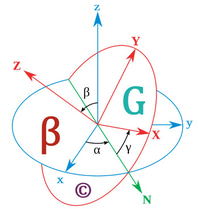Voltage Drop: The Silent Saboteur of Transit Reliability
In transportation electrical design, redundancy isn’t a luxury—it’s a necessity. When you’re powering systems that move thousands of people daily, there’s no room for single points of failure. Redundancy ensures that even if one component fails, the system keeps running, safely and seamlessly.
ELECTRICAL ENGINEERINGCRITICAL INFRASTRUCTURES
Engr. Benjamin V. Gonzales Jr.
6/24/20251 min read
In the world of transportation electrical design, voltage drop is one of those quiet issues that, if left unchecked, can wreak havoc on system performance. It doesn’t announce itself with sparks or alarms—but it slowly degrades reliability, efficiency, and safety. And in transit systems, where every meter of cable matters, voltage drop is a design challenge that demands precision.
What Is Voltage Drop?
Voltage drop occurs when electrical current flows through a conductor and loses potential due to resistance. The longer the cable run and the higher the current, the more voltage is lost before it reaches the load. In a subway station or airport terminal, this can mean dim lighting, sluggish escalators, or even malfunctioning emergency systems.
Why It’s a Big Deal in Transit Systems
Long Cable Runs
Transit infrastructure often spans hundreds of meters. Without proper cable sizing, voltage at the far end can fall below acceptable limits—especially for critical systems like lighting, fire alarms, and ventilation.High Load Demand
During peak hours, simultaneous operation of HVAC, elevators, and lighting can cause significant voltage drops if the system isn’t designed with load diversity and future expansion in mind.Safety and Compliance
Standards like the PEC and NFPA 70/130 set strict limits on allowable voltage drop—typically 3% for feeders and 5% total. Exceeding these can compromise both safety and code compliance.
How I Approach Voltage Drop in Design
Early Load Mapping: I start by identifying all critical and non-critical loads, their locations, and operating schedules.
ETAP Simulations: I use ETAP to model voltage profiles across the network, adjusting conductor sizes and rerouting feeders to optimize performance.
Strategic Panel Placement: By placing distribution panels closer to load centers, I reduce cable lengths and improve voltage stability.
Oversizing with Purpose: I don’t just oversize cables blindly—I calculate the trade-offs between cost, efficiency, and future-proofing.
Real-World Impact
In one recent subway station project, we noticed intermittent flickering in platform lighting during load testing. ETAP analysis revealed a 7% voltage drop at the farthest point. By upsizing the feeder and rerouting through a closer panel, we brought it down to 2.8%—well within code and operationally stable.
Final Thoughts
Voltage drop may be invisible, but its effects are not. It’s the kind of issue that separates good design from great design. In transit systems, where uptime and safety are paramount, managing voltage drop isn’t just technical—it’s essential.





